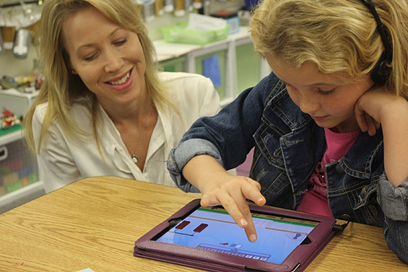
Can digital learning tools decrease teacher effectiveness? Unfortunately, the answer is yes. In the same way that television can improve student achievement if students are engaged with stimulating content that is monitored, and students are guided through reflection and analysis that align to content standards. I recently began watching Neil deGrasse Tyson’s series “Cosmos.” In a few short episodes I learned more about physics, space and biology than I learned in most of my high school courses. But I can watch nine seasons of “How I Met Your Mother” which, while quite humorous, is not teaching me new content or expanding my understanding of material in the same way Tyson’s show does. Digital learning has the same spectrum of material, and if teachers do not effectively monitor and guide students, then it can be a waste of time and it can decrease teacher effectiveness. We learned this lesson the hard way at Starr Detroit Academy.
In early 2012, as we were designing the instructional model at Starr, we started with a fundamental belief that digital learning is a tool that could support student achievement regardless of the quality of the teacher in the room. The online learning tools would reduce teacher planning, provide engaging content for students, and move students through new and challenging curriculum at their own pace, thus removing the element of teacher quality from the equation. Two years later we have seen the highs and lows from our blended learning implementation. During our first year, most of our teachers actively engaged and monitored the curriculum, leading to significant achievement growth in reading and math. In a partnership with MIND Research Institute, we found our students who completed 75% of the ST Math curriculum achieved 1.5 times the growth of their peers nationally on the NWEA MAP assessment. In the data we could see the bell curves shifting up, reinforcing the belief that our students were capable of anything.
Two years later we have seen the highs and lows from our blended learning implementation. During our first year, most of our teachers actively engaged and monitored the curriculum, leading to significant achievement growth in reading and math. In a partnership with MIND Research Institute, we found our students who completed 75% of the ST Math curriculum achieved 1.5 times the growth of their peers nationally on the NWEA MAP assessment. In the data we could see the bell curves shifting up, reinforcing the belief that our students were capable of anything.
This year we expanded to serve more students in additional grades, bringing in 250 new students and 20+ new staff members. The results this year have not matched the performance from year one. While some of our staff have maintained the same rigor and performance from last year, our overall progress was inconsistent.
In April, as we reviewed the data, the picture became clear. The initial assumption had been proven wrong. On its own, digital learning could not compensate for a weak teacher. Digital tools can be effective in the hands of the right educator, but in the hands of the wrong educator, they can turn into wasted time.
Instead of using the digital programs to drive differentiation and achievement, teachers were turning it over to students without any monitoring or oversight. In the absence of accountability and expectations, students quit moving through the curriculum. Instead they found ways to access games and other non-instructional content. Our digital learning program was no longer driving achievement, but rather hindering it.
I write this article not as a detractor of digital learning, but as a strong proponent. When we saw the data, we refocused our team, sat down with struggling teachers and began to coach them. We went back to monitoring student progress completion and lesson completion rates to make sure students were engaged in the curriculum and moving quickly.
As an educational community we are racing towards digital learning as a new panacea for student achievement. Millions, if not billions, of dollars are being spent on programs and hardware to increase digital access. I caution any leader to avoid the pressure to rush ahead. Move purposefully: Digital learning tools will not replace good teaching. In the hands of a great teacher they can push students to higher achievement, but in the hands of ineffective teachers, it can lead to reduced student achievement.
Jeremy Vidito is Executive Director of Strategic Planning & New Schools at Starr Commonwealth Educational Services.
MIND Research Institute welcomes guest blogs that highlight best practices in math education, blended learning and innovative learning strategies that inspire students at all ages.
Comment